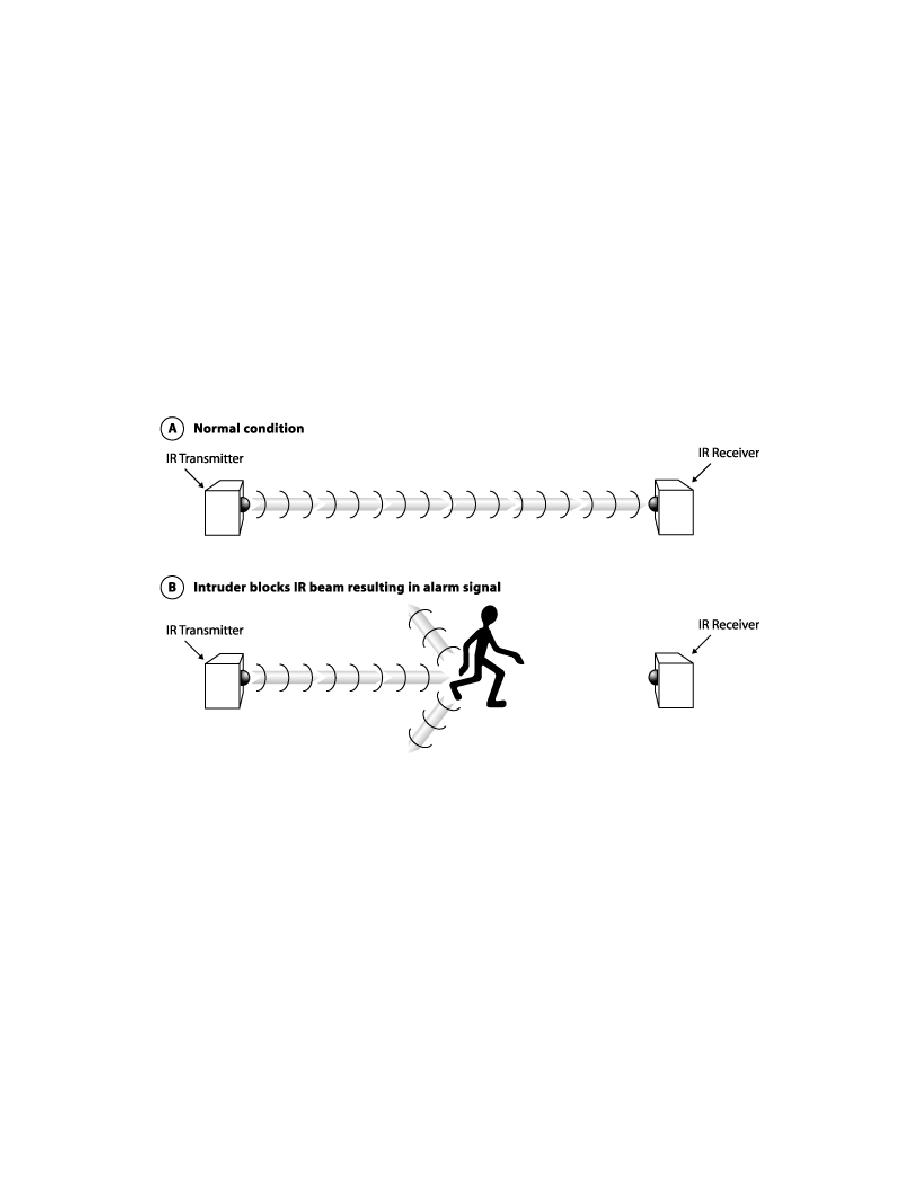
UFC 4-021-02NF
27 September 2006
change 1, 23 October 2006
analysis and motion path analysis (CCTV) systems. In general, open terrain sensors
work best on flat, cleared areas. Heavily or irregular contoured areas are not conducive
to open terrain sensing systems.
5-4.2.1 Infrared. Passive sensors can work well in exterior environments, but outside
interference issues of reflected light or radiated light have to be considered.
5-4.2.2 Active. Active infrared sensors transmit an infrared signal via a transmitter.
The location for reception is at a receiver. Interruption of the normal IR signal indicates
an intruder or object has blocked the path. The beam can be narrow in focus, but should
be projected over a cleared path. Refer to Figure 5-6 for a conceptual diagram of how
an active infrared IDS works.
Figure 5-6. Active Infrared IDS
Infrared Sensor Guidance:
5-4.2.3
Check that the terrain is suitable for clear signal transmission.
5-4.2.4 Infrared arrays do not work well in areas with heavy snowfall because drifts or
snowmounds cover sensors and or block transmission and reception paths.
5-4.3
Microwave sensors come in two configurations: bistatic and monostatic.
With both bistatic and monostatic sensors, the sensors operate by radiating a controlled
pattern of microwave energy into the protected area. The transmitted microwave signal
is received, and a base level "no intrusion" signal level is established. Motion by an
intruder causes the received signal to be altered, setting off an alarm. Microwave
signals pass through concrete and steel and must be applied with care if roadways or
adjacent buildings are near the area of coverage. Otherwise nuisance alarms may occur
due to reflected microwave patterns.
83


 Previous Page
Previous Page
